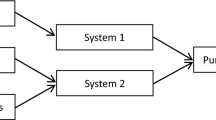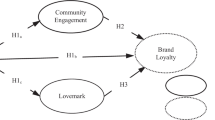Abstract
Brand personality is an important source of differentiation for companies. Congruency theory suggests a link between human personality traits and the personalities of brands. This article revisits this link among less visibility brands. Specifically, it looks at pasta as a product category focusing on Barilla - a leading FMCG pasta brand in the Italian domestic market, and sets out to determine the extent to which consumers are choosing Barilla, as a result of congruency to their own personality traits. Two of five dimensions in each of brand and human personality support the congruency link. It is interesting that the dimensions exhibiting significance received the highest scores by respondents that exhibited the highest usage. Furthermore, these two dimensions of personality are the same associations highlighted over recent years in Barilla communication campaigns. The results of the research are useful for FMCG brand managers. In their quest to seek differentiation, brand managers may successfully associate human characteristics to their brands. Although there are currently no established instruments that can directly measure the congruency, the research provides a methodology that successfully investigates congruency between a pasta brand and human personality. Caution needs to be exercised in extending the findings to other product categories.
Similar content being viewed by others
References
Aaker, D. (1996) Building Strong Brands. New York: The Free Press, pp. 137–175.
Aaker, J. (1997) Dimensions of brand personality. Journal of Marketing Research 34 (3): 347–356.
Aaker, J. and Fournier, S. (1995) A brand character and a person: Three perspectives on the question of brand personality. Advance in Customer Research 22 (1): 391–395.
Alpatova, A. and Dall’Olmo Riley, F. (2011) Comparing brand personality measures. Paper presented at Academy of Marketing Conference 2011: Marketing Fields Forever, 5–7 July, Liverpool. UK, http://eprints.kingston.ac.uk/20183/, accessed 5 May 2012.
Avis, M. (2012) Brand personality factor based models: A critical review. Australasian Marketing Journal 20 (1): 89–96.
Azoulay, A. and Kapferer, J.L. (2003) Do brand personality scales really measure brand personality? Journal of Brand Management 11 (2): 143–155.
Corstiens, J. and Corstiens, M. (1995) Store Wars: The Battle for Mindspace and Shelfspace. London: John Wiley & Sons.
De Chernatony, L. and Dall’Olmo Riley, F. (1998) Defining a brand: Beyond the literature with experts interpretations. Journal of Marketing Management 14 (5): 417–443.
Dorresteijn, T. (2007) Creating a brand personality online outline of the book visual branding, http://visual-branding.com/eight-outlines/creating-a-brand-personality/, accessed 23 June 2012.
Douglass, M.F. and Douglass, R. (1993) The validity of the Myers-Briggs type indicator for predicting expressed marital problems. Family Relations 42 (4): 422–426.
Furnham, A. (1996) The big five versus the big four: The relationship between the Myers-Briggs Type Indicator (MBTI) and NEO-PI five factor model of personality. Personality and Individual Differences 21 (2): 303–307.
Geuens, M., Weijters, B. and Wulf, Kr. (2009) A new measure of brand personality. International Journal of Research in Marketing 26 (2): 97–107.
Goodyear, M. (1996) Divided by a common language: Diversity and deception in the world of global marketing. Journal of the Market Research Society 38 (2): 105–122.
John, O.P. and Srivastva, S. (1999) The big five traits taxonomy: History. Measurement and theoretical perspective. In: L.A. Pervin and O.P. John (eds.) Handbook of Personality. New York: The Guilford Press.
Mccrae, R. and Costa Jr P.T. (1991) The NEO personality inventory: Using the five-factor model in counseling. Journal of Counseling and Development 69 (4): 367–372.
Nunnally, J.C. (1967) Psychometric Theory. New York: McGraw-Hill.
Park, B. (1986) A Method of studying the development of impressions of real people. Journal of Personality and Social Psychology 51 (5): 907–917.
Parker, B.T. (2009) A comparison of brand personality and brand user-imagery congruence. Journal of Customer Marketing 26 (3): 175–184.
Plummer, J.T. (1985) Brand personality: A strategic concept for multinational advertising. In: Marketing Educators Conference. New York: Young and Rubicam, pp. 1–31.
Saunders, D.R. (1989) Type Differentiation Indicator: Manual: A Scoring System for Form J of the Myers-Briggs Type Indicator. California: Consulting Psychologists Press.
Wood, L. (2000) Brands and brand equity: Definition and management. Management Decision 38 (9): 662–669.
Author information
Authors and Affiliations
Corresponding author
Rights and permissions
About this article
Cite this article
Garsvaite, K., Caruana, A. Do consumers of FMCGs seek brands with congruent personalities?. J Brand Manag 21, 485–494 (2014). https://doi.org/10.1057/bm.2014.17
Received:
Revised:
Published:
Issue Date:
DOI: https://doi.org/10.1057/bm.2014.17




